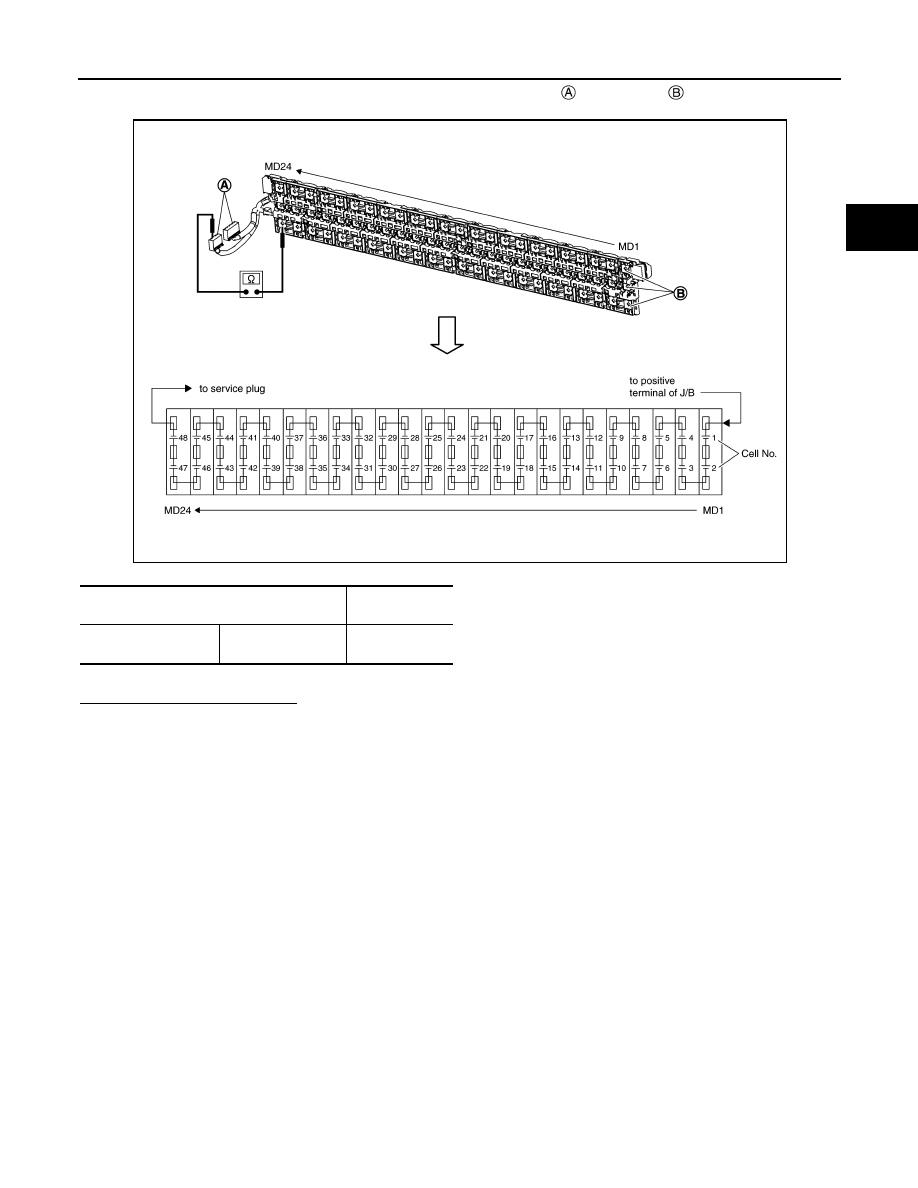Nissan Leaf. Manual - part 467

P33E6 CELL CONTROLLER
EVB-151
< DTC/CIRCUIT DIAGNOSIS >
D
E
F
G
H
I
J
K
L
M
A
B
EVB
N
O
P
1. Check the resistance Li-ion battery controller harness connector and bus bar of the determined cell
at step 5.
2. Check the divergence of the resistance and the resistance of other cell harness.
Is the inspection result normal?
YES
>> Replace module within the determined cell at step 5.
NO
>> Repair or replace harness or connectors.
Terminal
Resistance val-
ue
Li-ion battery control-
ler harness connector
Bus bar
Approx. 0
Ω
JSCIA0812GB